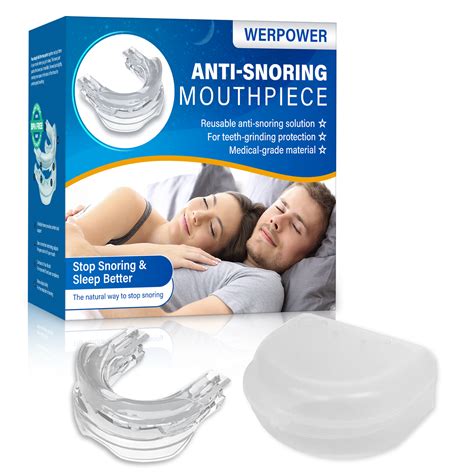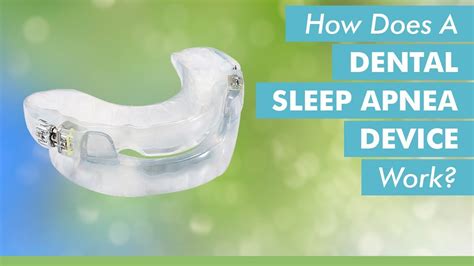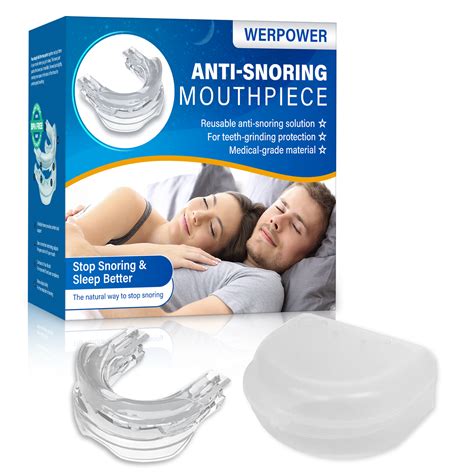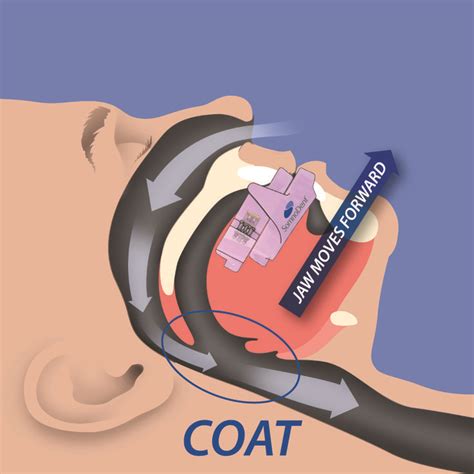Intro
Discover effective Sleep Apnea Mouth Devices, including oral appliances and mandibular advancement devices, to treat sleep apnea symptoms and improve breathing, reducing snoring and sleep disruptions with custom-fit solutions.
Sleep apnea is a serious sleep disorder that affects millions of people worldwide, causing breathing pauses during sleep, and can lead to daytime fatigue, high blood pressure, and other health issues. While there are various treatments available, sleep apnea mouth devices have gained popularity in recent years due to their effectiveness and convenience. In this article, we will delve into the world of sleep apnea mouth devices, exploring their benefits, working mechanisms, and steps to find the right device for your needs.
Sleep apnea mouth devices, also known as mandibular advancement devices (MADs) or oral appliances, are custom-made devices that are designed to keep the airway open during sleep, preventing breathing pauses and promoting a restful night's sleep. These devices work by advancing the lower jaw forward, which helps to keep the tongue and soft tissues of the throat from collapsing and blocking the airway. By using a sleep apnea mouth device, individuals with sleep apnea can experience significant improvements in their sleep quality, energy levels, and overall health.
The importance of addressing sleep apnea cannot be overstated, as it can have severe consequences on a person's quality of life and overall health. Sleep apnea has been linked to an increased risk of cardiovascular disease, stroke, and diabetes, making it essential to seek treatment as soon as possible. Sleep apnea mouth devices offer a comfortable and non-invasive alternative to traditional treatments, such as continuous positive airway pressure (CPAP) therapy, which can be cumbersome and noisy. With a sleep apnea mouth device, individuals can enjoy a peaceful night's sleep without the hassle of wearing a mask or being tethered to a machine.
Sleep Apnea Mouth Device Benefits

Sleep apnea mouth devices offer numerous benefits, including improved sleep quality, increased energy levels, and enhanced overall health. By keeping the airway open during sleep, these devices can help to reduce the number of breathing pauses, allowing individuals to sleep more soundly and wake up feeling refreshed and revitalized. Additionally, sleep apnea mouth devices are often more comfortable and easier to use than traditional treatments, making them an attractive option for individuals who have struggled with other therapies.
Some of the key benefits of sleep apnea mouth devices include:
- Improved sleep quality and duration
- Increased energy levels and reduced daytime fatigue
- Enhanced cognitive function and concentration
- Reduced risk of cardiovascular disease, stroke, and diabetes
- Comfortable and easy to use
- Custom-made to fit individual needs and preferences
How Sleep Apnea Mouth Devices Work
Sleep apnea mouth devices work by advancing the lower jaw forward, which helps to keep the tongue and soft tissues of the throat from collapsing and blocking the airway. This is achieved through a custom-made device that is designed to fit the individual's mouth and jaw. The device is typically worn during sleep and can be adjusted to achieve the optimal position for keeping the airway open.The working mechanism of sleep apnea mouth devices can be broken down into several key steps:
- Customization: The device is custom-made to fit the individual's mouth and jaw.
- Advancement: The device advances the lower jaw forward, keeping the tongue and soft tissues of the throat from collapsing.
- Stabilization: The device stabilizes the jaw and tongue, preventing them from falling back and blocking the airway.
- Breathing: The device allows for unobstructed breathing, promoting a restful night's sleep.
Types of Sleep Apnea Mouth Devices

There are several types of sleep apnea mouth devices available, each with its own unique features and benefits. Some of the most common types of devices include:
- Mandibular advancement devices (MADs): These devices advance the lower jaw forward, keeping the tongue and soft tissues of the throat from collapsing.
- Tongue-retaining devices (TRDs): These devices hold the tongue in place, preventing it from falling back and blocking the airway.
- Hybrid devices: These devices combine the features of MADs and TRDs, offering a customized solution for individual needs.
When choosing a sleep apnea mouth device, it is essential to consider factors such as comfort, effectiveness, and ease of use. Individuals should consult with a healthcare professional or a qualified dentist to determine the best device for their specific needs and preferences.
Steps to Find the Right Sleep Apnea Mouth Device
Finding the right sleep apnea mouth device can be a daunting task, especially with the numerous options available. However, by following these steps, individuals can increase their chances of finding a device that meets their needs and preferences: 1. Consult with a healthcare professional: Schedule an appointment with a healthcare professional or a qualified dentist to discuss sleep apnea treatment options. 2. Determine the type of device: Decide on the type of device that is best suited for individual needs, such as a MAD or TRD. 3. Consider comfort and ease of use: Choose a device that is comfortable and easy to use, with adjustable features to ensure a customized fit. 4. Evaluate effectiveness: Assess the device's effectiveness in reducing sleep apnea symptoms and improving sleep quality. 5. Follow-up care: Schedule regular follow-up appointments with a healthcare professional to monitor progress and make adjustments as needed.Sleep Apnea Mouth Device Cost and Insurance

The cost of sleep apnea mouth devices can vary depending on the type of device, materials, and customization. On average, the cost of a sleep apnea mouth device can range from $1,000 to $3,000. However, some devices may be covered by insurance, making them a more affordable option.
When it comes to insurance coverage, individuals should check with their provider to determine if sleep apnea mouth devices are covered under their plan. Some insurance companies may cover a portion of the cost or require a co-payment. Additionally, individuals may be able to use flexible spending accounts (FSAs) or health savings accounts (HSAs) to pay for sleep apnea mouth devices.
Sleep Apnea Mouth Device Maintenance and Care
To ensure the longevity and effectiveness of sleep apnea mouth devices, regular maintenance and care are essential. Individuals should follow these tips to keep their device in good condition: * Clean the device regularly with soap and water * Store the device in a protective case when not in use * Avoid exposing the device to extreme temperatures or moisture * Schedule regular follow-up appointments with a healthcare professional to monitor progress and make adjustments as neededSleep Apnea Mouth Device Alternatives

While sleep apnea mouth devices are an effective treatment option, they may not be suitable for everyone. In such cases, individuals may consider alternative treatments, such as:
- Continuous positive airway pressure (CPAP) therapy: This involves wearing a mask over the nose and mouth during sleep, which delivers a constant flow of air to keep the airway open.
- Bi-level positive airway pressure (BiPAP) therapy: This involves wearing a mask over the nose and mouth during sleep, which delivers two different levels of air pressure to keep the airway open.
- Lifestyle changes: Making lifestyle changes, such as losing weight, exercising regularly, and avoiding alcohol and sedatives, can help to reduce sleep apnea symptoms.
Sleep Apnea Mouth Device Success Stories
Many individuals have found success with sleep apnea mouth devices, experiencing significant improvements in their sleep quality and overall health. Here are a few success stories: * John, a 45-year-old male, was diagnosed with sleep apnea and was struggling to find a treatment that worked. After trying a sleep apnea mouth device, he reported a significant reduction in sleep apnea symptoms and improved energy levels. * Sarah, a 35-year-old female, was experiencing frequent awakenings and daytime fatigue due to sleep apnea. After using a sleep apnea mouth device, she reported improved sleep quality and increased energy levels.What is sleep apnea?
+Sleep apnea is a serious sleep disorder that causes breathing pauses during sleep, leading to daytime fatigue, high blood pressure, and other health issues.
How do sleep apnea mouth devices work?
+Sleep apnea mouth devices work by advancing the lower jaw forward, keeping the tongue and soft tissues of the throat from collapsing and blocking the airway.
Are sleep apnea mouth devices comfortable to wear?
+Yes, sleep apnea mouth devices are designed to be comfortable and easy to wear, with adjustable features to ensure a customized fit.
In conclusion, sleep apnea mouth devices offer a comfortable and effective treatment option for individuals with sleep apnea. By understanding the benefits, working mechanisms, and steps to find the right device, individuals can take the first step towards improving their sleep quality and overall health. We invite you to share your thoughts and experiences with sleep apnea mouth devices in the comments below. If you found this article informative, please share it with others who may benefit from this information. Together, we can raise awareness about sleep apnea and promote better sleep health for all.
